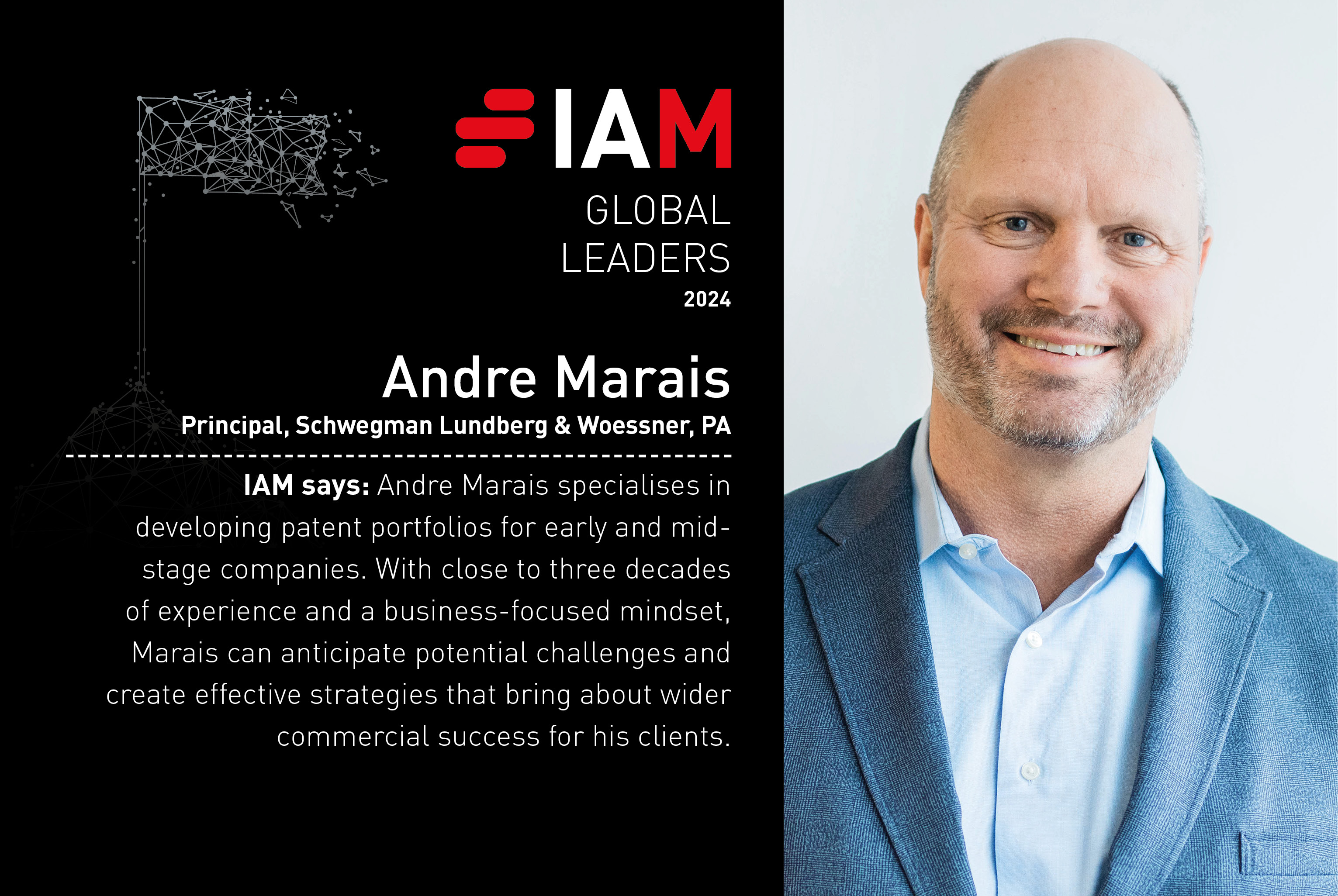Andre Marais
 As principal, what does inspiring leadership look like to you?
As principal, what does inspiring leadership look like to you?
Effective and inspiring leaders should offer multiple compelling reasons for their employees to trust and look up to them. One of these is the ability to inspire others. However, it is crucial to support this with substance and thoughtful planning. At Schwegman, inspirational leadership often involves identifying new initiatives or challenges, whether it is for the entire firm, a specific practice group or an individual. The leader then communicates these goals and provides the necessary resources and support to achieve them. During a recent principal retreat, we decided to address two important issues: the impact of artificial and machine learning on our practice and improving our firm's marketing effectiveness. We held breakout sessions to brainstorm ideas on both topics. The group offered valuable suggestions which were then synthesised into a concrete action plan by our executive director, Maureen Kinsler.
This is just one example of how our group of principals take on leadership roles within the firm. We aim to inspire ourselves and the entire firm to continuously improve and progress. We also utilise the remarkable resources available to us to support the initiatives associated with our goals. As a firm, we have always prided ourselves on being innovative and forward-thinking. Looking back at our history, you will find a track record of developing innovative solutions, whether technical or structural, that enhance efficiency and cultivate a positive culture and effective communication. This is especially important in the post-pandemic work environment, where a significant portion of our workforce operates remotely. The principal group has been working diligently to foster communication, collaboration and a sense of belonging for all members of the firm.
If you could change three things about the prosecution landscape in the United States, what would they be and do you think they are likely to happen?
The three changes I would make to would be first to clarify and narrow the judicial exceptions to patentable subject matter. The current ambiguity around subject-matter eligibility creates uncertainty and increases costs. Providing more specific definitions of abstract ideas, laws of nature and natural phenomena could reduce this ambiguity. This change seems feasible with congressional action.
Second, increase USPTO funding to improve patent quality. Low budgets have strained examiner resources, contributing to the allowance of low-quality applications. Modest, regular fee increases would provide funds to hire and retain experienced examiners without overburdening small inventors.
Finally, implement litigation reforms to deter abusive patent suits. Contingency fee arrangements could be limited, requiring plaintiffs to pay costs upfront. A ‘loser pays’ system, requiring the losing party to pay a portion of the winner’s legal fees, could also deter frivolous suits. However, these litigation reforms may face resistance.
Have you had to adapt your clients’ portfolio strategies to manage economic headwinds (eg, pruning or allowing patents to lapse)? If so, what changes have you suggested and how are they working in practice?
Some of the approaches we have suggested to help clients manage costs without compromising core IP protection include:
- prioritising patent applications (eg, using Track 1 or the Patent Prosecution Highway and foreign filings for key inventions with the highest commercial viability – allowing non-core applications to lapse can refocus budgets on high-value assets;
- becoming more selective with continuation applications, limiting these to cases with clear commercial potential;
- pruning peripheral aspects of patent families to reduce overall prosecution and maintenance costs, but remaining careful to not compromise the core claim scope;
- shifting from broad coverage to tailored protection of key embodiments and commercial products, reducing filing and prosecution fees; and
- utilising provisional applications more extensively to defer costs when commercial potential is less certain.
So far, most clients have been receptive to these strategies as a way of reducing costs without severely impacting their core IP rights. The priority has been on maintaining protection for key products and technologies with the highest commercial relevance. Overall, a more focused approach has worked well in practice.
How would you characterise the patent-eligibility landscape at present?
Two words: uncertain and unpredictable! There are ambiguous boundaries of judicial exceptions and eligible subject matter is being determined case by case without consistency. Particular technologies are more heavily impacted, though no domain is immune. Determining practical application is challenging, inventive concept assessment is subjective and overcoming rejections is difficult and unpredictable.
Andre Marais
Principal
[email protected]
Andre Marais is a registered patent attorney and principal of Schwegman Lundberg & Woessner.
Mr Marais believes that patent portfolios should be valuable, strategic assets that align with a solid business strategy. Having worked with several prominent Silicon Valley companies since their inception, he brings an ‘in the trenches’ perspective to portfolio strategy and growth. His practice focuses on IP counselling, patent prosecution (both US and foreign), patent validity, infringement and IP due diligence.